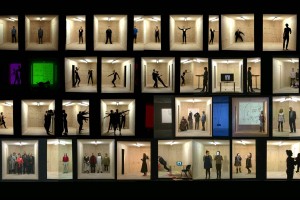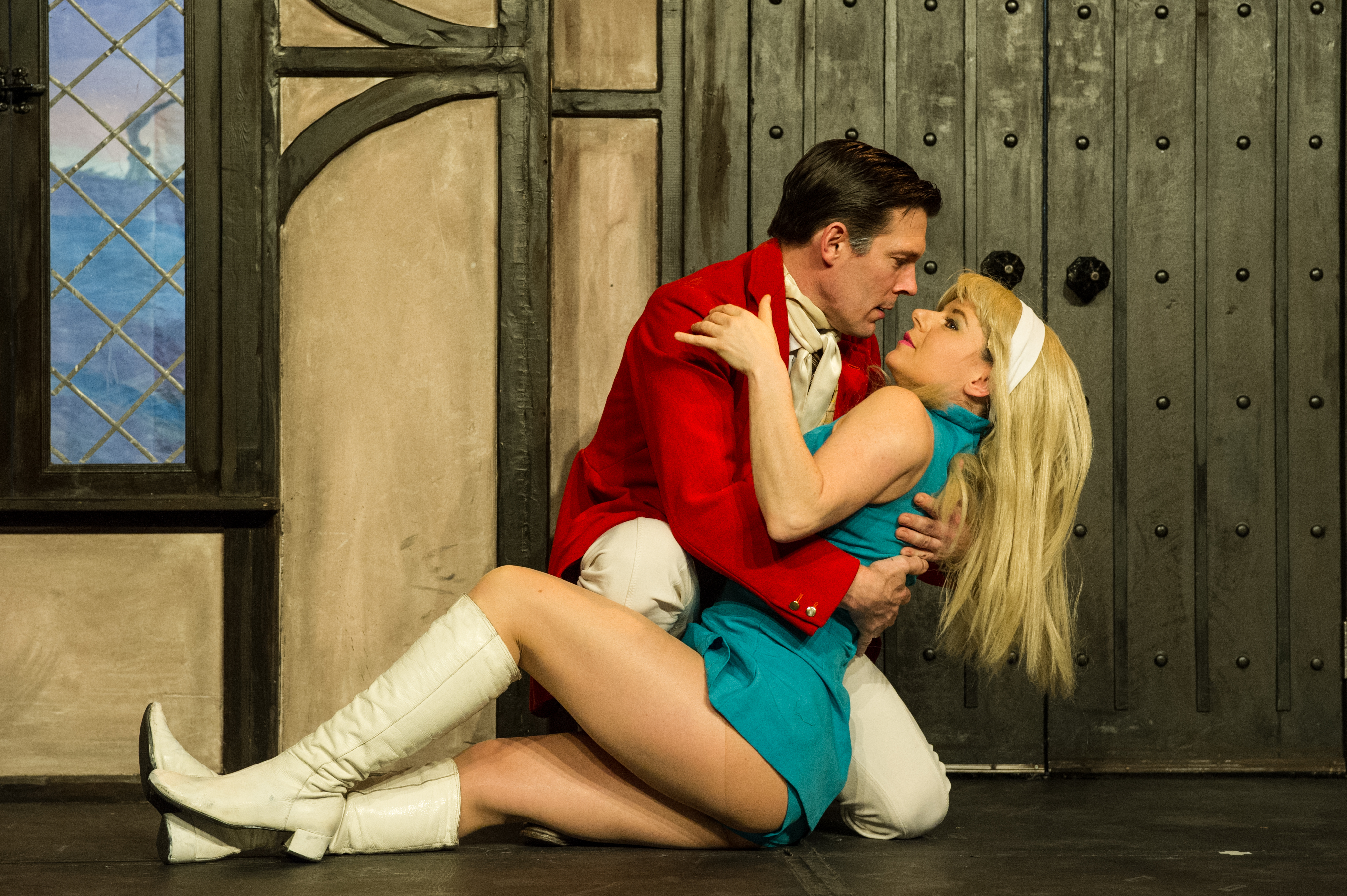Lisa Wolfe goes to Milton Keynes’ International Festival and samples a smorgasbord of theatrical delights from around the world
Arriving in Milton Keynes under a burning July sky, it feels like a town that’s been lifted from California and dropped onto the flatlands of Buckinghamshire.
The archetypal new-town, Milton Keynes was designed to bring commerce, entertainment and easy living together for the London overspill. Now branded MK, it was officially ‘opened’ in 1967.
It seems all hard surfaces, sharp angles and straight lines, easy to decode: you’ll walk through one of the many shopping malls past the office blocks and chain restaurants, via the commercial or theatre district. So far so ordinary, but MK has deeper rhythms running through it. Midsummer Boulevard sounds like a joke name for the central strip, until you learn that it frames the rising sun on Midsummer’s Day – accompanied by Morris dancers, one hopes. Signposts in the park lead to Avebury Avenue or Silbury Street. There is mystery bubbling beneath the surface.
People work, play and shop here, but seem to live off the main grid, in nearby tower blocks or in villages that remain in the landscape. A festival provides a great opportunity to both gather people in and to take them far beyond their lived environment.
As a bold statement of intent, Milton Keynes’ International Festival ( IF) has plonked a great big circus tent in the middle of the shopping mall programmed with a range of family friendly shows at affordable prices. Sur Mesure’s Fillage is usually performed outdoors but translates well to this environment. The Belgian company has two top-notch acrobats, a versatile juggler, and a lovely horn-based band playing their own compositions, with lyrics telling of desert islands, whale hunts and oceans deep. Here the trampoline is the sea, playfully tossing the tumblers into somersaults that reach way up to the top of the tent and down onto the floor below, inches from the feet of children watching, entranced. The costumes give a nod to the maritime theme, and look sturdy enough to prevent a few bruises: they even match the interior colour scheme. Fillage neatly blends songs with action without losing pace – the musicians have some physical involvement too with good comic use of the French horn. If the show lacks some audience interaction by being in a seated venue, it’s partly countered by the tent’s gauze side-panels that generously let shoppers watch and join the applause at the end. It’s a sweet half-hour of skills and thrills.

The Democratic Set. Photo Anna Tregloan
Also in the shopping mall, Australian theatre company Back to Back is making The Democratic Set, a new work commissioned by The Open University comprising filmed portraits of local people from various walks of life. Performers occupy a cube and the camera runs across on a dolly track capturing story and movement. I watched a young martial arts expert show off her kicks. IF, and producers The Stables, have made sure that a real cross-section of people are represented, building relationships with refugee and homeless groups to get their participation. There are three days of filming before the film is edited and screened. Yes, it puts people in boxes, separately, but the space is theirs to do or say what matters to them. The end result will be a great document for the people of Milton Keynes; a visual diary of life in 2018 with a clean and compelling aesthetic.
In contrast, For The Time Being, by Schweigman& with Slagwerk Den Haag, flings a group of people into a box and makes them get on together. Human relationships are at the heart of the Dutch company’s work – another show of theirs, Blaas, which I reviewed at Brighton Festival (May 2018), similarly coaxed the audience from passive viewer to participant, though with less physical contact.

For The Time Being. Photo Jochem Jurgens
In For The Time Being we’re like a gaggle of kids at a party, trying to figure out who is in charge, and wondering what on earth is going to happen next. We enter an art gallery exhibiting what looks like Duane Hanson’s hyper-realistic sculpture. I was always very good at musical statues and grandmother’s footsteps but no way could I hold a dramatic pose for this long, let alone freely drool. It’s a relief when the human sculptures spring into life and begin their games with us. Whilst obviously super fit, the performers have no hint of staginess about them – they’re an interesting-looking bunch of thirty-somethings in casual clothes. Speed and stillness are the essence of a piece that wants us to experience time, and, whilst it’s a simple metaphor, the way the show combines the rush and the freeze is compelling. It continually surprises and is subtle in its switches from involvement to alienation, the only sounds being breath and the squeak of rubber shoes.
There is visual variety too, with patterns emerging suggestive of the Central line in rush-hour or a disorderly bee-hive trying to find a queen, held by a pool of light. The performers have exquisite timing and precision, with supreme spatial awareness antennae. There is a current of danger – you might easily get bumped and need to stay aware – but no threat, just that bee-like buzz. We look at each other and nervously giggle. As the show develops, the cast gets bolder and there is contact. I’m picked up and carried at great speed across the not-overly-large space then dropped. The audience joins in, picking up actors, making connections. Together we ebb and flow like this until a sudden shift happens. As with Blaas, the ending is a theatrical coup that gives the space to us. Time really does slow down as the audience group contemplates its communal response to the situation it is in. Boxes are involved. I’m told that audiences behave very differently at the end of the show from country to country: in Holland they are boisterous; in Germany obedient; and now, in this UK premiere, we’re an odd mix of both.
That I’ve no idea how long the show lasted is perhaps the best accolade – I was there, being in the moment for that time, and I’d happily be there again, for another party in another town.
Up in Campbell Park, IF has built Festival Central, a multi-flagged arena of tents and deck-chairs, Spiegeltent and cinema dome. In the Arabian Tent, IF Creative Director Bill Gee is talking to a trio of producers about the impact of Brexit, current and future. Alison Woods from NoFit State Circus says she’s turning down European bookings for next year because of uncertainty. Dries Verhoeven, whose highly political ghost-train piece Phobiarama is on here, relates the trouble his cast encounter leaving Holland on the basis of how they look, despite all being Dutch.
The only graffiti I’ve noticed in ultra-clean MK has been Brexit-related slogans chalked on pavements, such as: ‘No Deal means No Jobs.’ A faint hammer and sickle was spray-painted on a park bench. Is the town harbouring a sub-culture of revolt alongside its pagan origins? Bill tells us that he has deliberately programmed more European and foreign events than in previous years. We hope it’s not now or never.

La Cocina Publica. PHoto by Adelano
The way that art can bring us together is warmly demonstrated by Teatro Container’s La Cocina Publica. This Chilean band of cooks, theatre makers and musicians pitch their container in a space accessible to a community and invite locals along to swap recipes and stories, to make decorations, to put on a show and share a meal. First seen in the UK in Tilbury Docks, it makes its touring premiere in West Bletchley, on a patch of green near the community centre and the local shops. Here I meet Keith from Yorkshire who is a bit nervous about being MC at the show on Saturday. There are ladies sharing food memories at the tables and I write down mine; others are making aprons from strips of coloured fabric. Doing the groundwork with the community and then just letting the Cocina set-up and get on with stuff, allows a very natural relationship between residents and visiting company to emerge.
People are curious to know what this oldy-worldy kitchen is doing in their manor, what language these exotic looking people speak, why is that man is building a giant table. There are kids prying amongst the pots and pans, community police officers sipping iced tea. Personal histories are uncovered, triggered by the memory of boiled beetroots or fried onions. I chat with kitchen chief Juan about the politics of agriculture and food production. I’d love to see the show that emerges, a mix-tape of recorded stories and poems with Juan on guitar, flags and banners made on-site and 200 people sharing food as the culmination of a process of social integration. You’ll be great Keith. You’re in great company.
Taking people out of their built environment and into nature is the core of Jony Easterby and his fellow artists’ large-scale installation For The Birds. It took over a woodland atop the Sussex Downs in Brighton Festival 2017 and now animates an area of Linford Manor Park just outside MK. The relocation reinforces my opinion that this is a truly wonderful work of art. The individual elements are joyful in themselves but it’s the curation that is so winning.
The setting here is quite linear and follows a path through the park lined on one side by back gardens and on the other by the Grand Union Canal. Occasionally a cyclist whizzes past. It could be distracting but it’s a credit to the artists and the curators that it somehow adds to the experience; it heightens the weirdness of our encounters with, for example, a flock of origami cranes or the squeal of circling fireflies. The audience walks slowly and quietly, finding space as it moves from jungle to rainforest. At points the installations are as simple as just a light up a tree-trunk, or some pretty leaf lit to show off its shadow, encouraging you to look more closely at nature. It’s easy to forget there are miles of cable hidden here – no speakers are visible, yet sound is everywhere.
Where have the parrots gone, the cages are empty but surely I can hear them calling? Cheep cheep chirp goes the Morse code bird. In Kathy Hinde’s film, a Bavarian bird whistler is doing a wood-pigeon and getting a song back from the distant trees. Most pieces are subtle and similar in scale: you can get up close to see tiny bellows open and close with a cuckoo’s toot, or watch the recorders singing. Walk-ways are defined but there are twists and surprises along the way, along with changes of medium – there’s even a human communing with nightingales at the end.
It’s the sculptures using feathers that charm me most: Mark Anderson’s Feather Dervish exploits their simple structure and amazing strength; beautifully illuminated as they spin so very fast they almost dissolve. I could watch them for hours. For The Birds transforms the landscape whilst staying in harmony with it. The art works with, not against the woodland and flora, and this is what makes it so bewitching. For a festival that values and celebrates the richness of everyday and extraordinary encounters, it’s a great contribution.
Leaving the park, I passed a stone circle folly, chunks of old rock from the ancient quarry. Perhaps it’s keeping an eye on Avebury and Stonehenge, and on MK glittering away in the distance.

For the Birds: Photo Shaun Armstrong
Featured image (top): For the Birds. Photo Shaun Armstrong.
Milton Keynes’ International Festival took place 20–29 July 2018. For further information, see the website.













